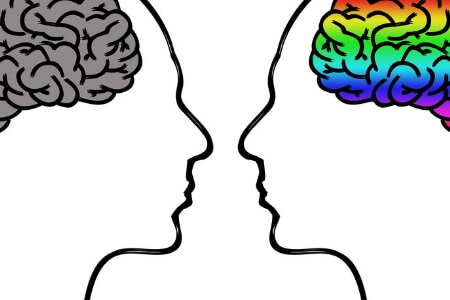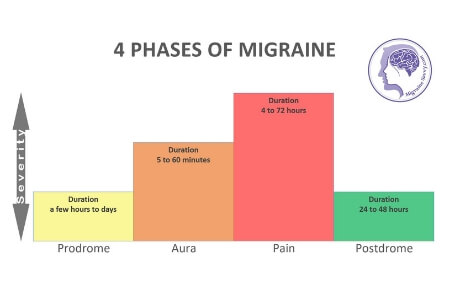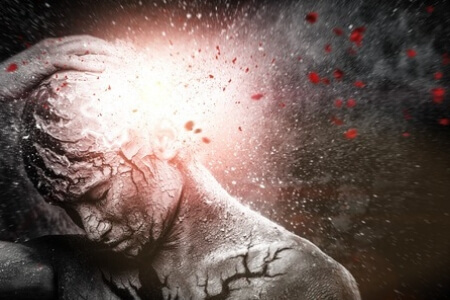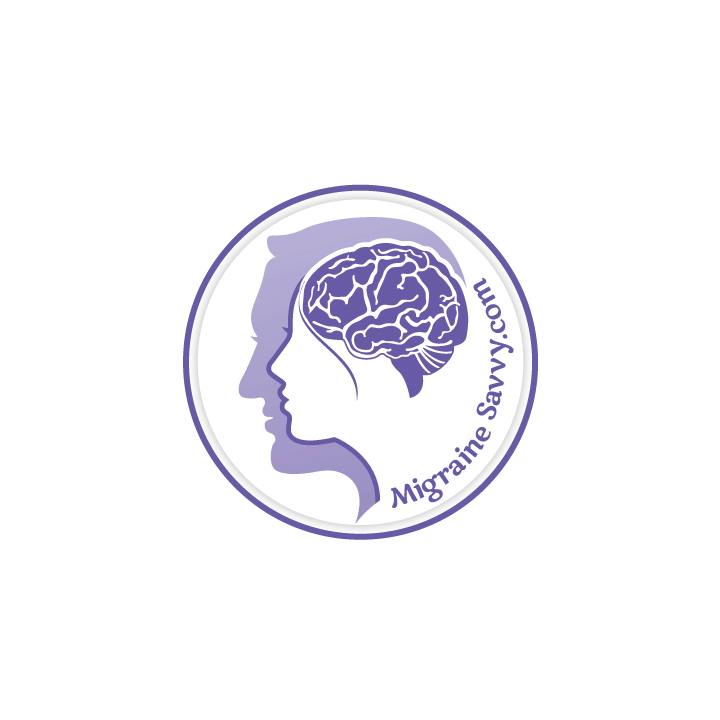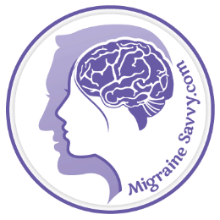- Home
- Migraine Types
COMPLETE MAGNESIUM SUPPORT
My Top Choice - Magnesium Breakthrough - The ONLY supplement with all 7 essential magnesium types in one formula. Most only have 1-2 types, leaving you deficient.
Types of Migraines: What You Need to Know for Fast Relief
Not all migraines are the same. Understanding the different types of migraines and their unique symptoms is crucial to finding the treatment and relief that works for you.
By identifying your symptoms, you can help your doctor pinpoint the right type and treatment, leading to faster relief and better outcomes.
 Types of Migraines: Know Your Type, Know Your Best Treatment
Types of Migraines: Know Your Type, Know Your Best Treatment
If you’ve been struggling with treatments that don’t seem to work, it could be because the treatment isn’t suited to your specific type of migraine. In this article, I’ll go over key things you need to know about the most common types of migraines, along with practical tools and prevention strategies to help you take control of your migraine management.
Contents
- What You Need to Know Right Now
- Why Understanding Your Migraine Type Matters
- The Two Primary Classifications of Migraine
- Self-Quiz: What Type of Migraine Do You Have?
- Treatment Approaches
- Taking Action: Your Next Steps
- Prevention Strategies That Work
- Common Questions About Migraine Types
- Final Thoughts
- Recent Articles
What You Need to Know Right Now
If you're experiencing migraine attacks, here's what's most important to understand:
- Each type of migraine requires different treatment approaches
- Getting the correct diagnosis is crucial for effective treatment
- Early intervention can help prevent attack escalation
- Some treatments that work for one type may be dangerous for another
Why Understanding Your Migraine Type Matters
Each migraine type comes with unique triggers, symptoms, and treatment needs, and without the right diagnosis, it’s easy to feel stuck and frustrated. While there are no guarantees, knowing your migraine type can help you make better decisions about your care and reduce the frequency and severity of attacks.
Did you know that over 50% of women and 70% of men with migraine don't receive a proper diagnosis? This often happens because many doctors/healthcare providers receive limited training in migraine management during their medical education.
Let me be clear: migraine is not just a bad headache. It's a complex neurological disease that requires proper diagnosis and targeted treatment. This is especially important if you experience migraine with aura, as certain medications that help others might actually be dangerous for you.
Here are my detailed articles on these types:
IMPORTANT: Always consult your Medical Doctor for a correct diagnosis! Never delay a visit to the hospital or your physician if you're experiencing head pain. Equally important is that children have very different migraine symptoms than adults.

The Two Primary Classifications of Migraine
Migraine is divided into two main categories under the classification of headache disorders and is based on whether or not there are warning signs (or "aura") before the onset of pain. These categories are Migraine Without Aura (MWOA) and Migraine With Aura (MWA).
Here’s a closer look at these categories and some of their associated subtypes. There are a lot of primary headaches in the IHS Classification ICHD-3, I'll cover the most common ones.
My #1 Choice in Magnesium Supplements
1. Migraine Without Aura (MWOA)
Migraine without aura, sometimes called "common migraine," is the most prevalent form. It affects about 80-85% of people with migraine and is characterized by a throbbing or pulsing headache, usually on one side of the head, accompanied by symptoms such as nausea and sensitivity to light and sound.
Migraine without aura (MWOA) gives you very little warning and only hours before the attack begins, you can experience the more commonly associated symptoms listed above along with these subtle symptoms not generally well-known anxiety, depression, fatigue or unusual tiredness.
I have to remind myself that these are symptoms of an impending attack and not just me being overly emotional, which I can be from time to time.
What you'll experience:
- Sudden onset with little warning
- Intense, throbbing pain, typically on one side of the head
- Nausea and vomiting
- Sensitivity to light (photophobia) and sound (phonophobia)
Early warning signs you might notice hours before an attack:
- Unexplained anxiety
- Sudden mood changes
- Unusual fatigue
- Mild depression
Migraine Without Aura Subtypes
Chronic Migraine
Defined by the occurrence of headaches on 15 or more days each month, chronic migraine is one of the most disabling types. Chronic migraine sufferers often experience symptoms severe enough to impact daily life and may benefit from a combination of preventive and acute treatments.
You may have chronic migraine if you experience:
- 15+ headache days per month
- At least 8 are migraine days
- This pattern continues for 3+ months
Abdominal Migraine
This type often affects children and presents with abdominal pain, nausea, and vomiting instead of a headache. Though children often outgrow abdominal migraines, many will later develop traditional migraines with or without aura.
Intractable Migraine Status Migrainosus
Intractable Migraine Status Migrainosus is an especially severe and long-lasting form of migraine attack.
It is "a rare and severe type of migraine that can last 72-hours or longer". [1] Hospitalization is often required to assist with the intense pain and nausea that come with this attack.
Dilated blood vessels in the brain caused here, increase the risk of stroke substantially making treatment more focused on stopping or aborting the entire attack as opposed to just pain reduction strategies. Here are the key points:
- Duration: 72+ hours
- Requires immediate medical attention
- Often needs hospital treatment
- Higher stroke risk due to blood vessel dilation
Treatment approach:
- Focus on stopping the entire attack
- May require IV medications
- Anti-nausea treatments often necessary
For more on the triggers and possible causes of these types of migraines, see the section on migraine triggers and understanding causes of migraine.
Management Tips:
Managing migraine without aura often includes a combination of over-the-counter pain relief (like NSAIDs), prescription medications, and lifestyle adjustments. Chronic migraines may also require preventive medications, such as beta-blockers or CGRP inhibitors, to reduce attack frequency.
Management tips for children - the symptoms normally pass quickly, and as they pass quickly, fast acting triptans may be the best strategy. It might be worth considering a combination of daily preventive medication and anti-nausea medications for your child to take to effectively deal with their attacks. Talk to your doctor about these options.
 Learn your type so you can get the right treatment.
Learn your type so you can get the right treatment.2. Migraine With Aura (MWA)
Migraine with aura, or "classic migraine," affects around 25% of people living with migraine. This type of migraine includes visual, sensory, or other disturbances before the headache phase begins. The aura can serve as a warning sign, giving you the time to take early steps to mitigate the intensity of the attack.
An aura can occur from one hour before the attack of the pain phase and last from fifteen to sixty minutes, but mine last for days before the pain episode strikes. Similar to MWOA you can experience commonly associated symptoms like anxiety, depression, and unusual fatigue.
What you'll experience:
- Visual disturbances, such as seeing flashes, zigzag lines, or blind spots
- Sensory changes like numbness or tingling in the hands or face
- Warning symptoms 20-60 minutes before head pain phase
- Temporary motor or speech impairment in rare cases
Migraine With Aura Variants
Vestibular Migraine
Characterized by vertigo, dizziness, and balance issues, vestibular migraine may or may not involve a headache. This type is often mistaken for inner ear disorders, making proper diagnosis important for effective treatment.
What you'll experience:
- Sudden episodes of spinning or swaying sensations (vertigo)
- Difficulty maintaining balance, especially during movement
- Nausea and vomiting - due to intense dizziness or vertigo
- Sensitivity to motion or changes in position
- Light sensitivity especially during a migraine attack
Migraine with Brainstem Aura
Migraine with Brainstem Aura was previously called Basilar-Type Migraine (MWA).
This is a rare form of migraine with an aura but with no weakness or motor function loss accompanying it.
It remains uncertain whether or not the basilar artery to the back of the brain is actually involved as it is also related to hormonal changes. Hence, it seems to primarily affect young adult women. [2]
The symptoms come from pressure changes around the brain stem and are more typically on both sides of the brain.
The aura symptoms that precede the headache can include: dizziness, vision and speech disturbances, loss of balance, confusion, ringing in the ears and tingling on both sides of the body.
During the attack, you might experience: temporary blindness, the inability to form words or speak properly, loss of consciousness or fainting.
These symptoms usually occur suddenly and typically last less than one hour. The pain phase that follows is then typical of a classic migraine attack. [2]
Key characteristics:
- Rare form affecting mostly young women
- Related to hormonal changes
- Symptoms affect both sides of the brain
Warning signs to watch for:
- Dizziness
- Speech difficulties
- Balance problems
- Vision changes
- Ringing in ears
Hemiplegic Migraine
This type mimics stroke symptoms, causing temporary paralysis or weakness on one side of the body. It is essential to consult a healthcare provider, as certain medications, such as triptans, are not recommended for hemiplegic migraines.
Hemiplegic Migraine is rare, and it is one of the more severe types of migraine.
You may develop some temporary motor paralysis (hemiplegia) and one-sided sensory or nerve disturbances in your body, like muscle weakness, immediately followed by the pain phase.
You might also experience some numbness or a pins-and-needles sensation. It can often resemble a stroke. The neurological symptoms disappear when the pain phase begins.
There is often family history with hemiplegic migraine and "in about 50% of these families, a chromosome defect may be found on chromosome 19 or on chromosome 1 and involves abnormal calcium channels.
A physician should be consulted for this type of headache. You should not take triptans if you have this type of headache." [2]
Critical information:
- Causes temporary paralysis on one side
- Can mimic stroke symptoms
- Often runs in families
- Requires special treatment considerations
Important safety note: If you have this type, you should not take triptan medications.
You should not take triptan medications if you have Hemiplegic Migraine.
Retinal Migraine
This rare type affects only one eye, causing temporary blindness or visual disruptions that usually last for a few minutes to an hour. Retinal migraine requires prompt medical attention due to their potential severity and impact on vision.
I'll cover this in depth in the next section, so here are some quick tips to finish this section on migraine with aura subtypes.
Management Tips:
Treatments for migraine with aura may include triptans, anti-nausea medications, and neuromodulation devices. Preventive strategies, such as CGRP inhibitors or specific neuromodulation treatments like Cefaly, may be effective for those who experience frequent or severe migraines with aura.
My #1 Choice in Magnesium Supplements
Types of Migraines Affecting Vision and Eye Muscles
Migraine can sometimes include symptoms affecting the eyes, leading to confusion between various migraine types. Understanding the differences between Ocular, Optical, Ophthalmic, and Retinal migraine - as well as related conditions like Recurrent Painful Ophthalmoplegic Neuropathy (RPON) - can help guide appropriate management.
Retinal Migraine
Retinal migraine is characterized by visual disturbances or temporary blindness in one eye, often preceding or occurring alongside a headache on the same side. Retinal migraine involves visual changes that are restricted to one eye and can include any combination of migraine with aura symptoms.
What you'll notice:
- Pain or pressure on one side of the head
- Visual symptoms in one eye
- Temporary vision loss possible
- A dull, localized ache near or behind one eye
Visual disturbances may include:
- Twinkling or flashing lights
- An extended aura around lights
- Zigzag patterns
- Blurry vision
- Blind spots
- Tunnel vision
These visual symptoms are typically short-lived, lasting from minutes to an hour, and generally resolve on their own. However, frequent or prolonged visual disturbances may require consultation with a healthcare provider to rule out other eye conditions.
Ocular, Optical and Ophthalmic Migraine
These terms are often used interchangeably but can sometimes refer to distinct migraine types with varied eye-related symptoms:
- Ocular Migraine: Often used to describe migraines with visual symptoms, "ocular migraine" typically refers to temporary vision changes without head pain. These may include flashing lights, zigzag patterns, or blind spots in both eyes, and are generally brief.
- Optical Migraine: Similar to ocular migraine, optical migraine involves visual disturbances like flashes or patterns but may include mild head discomfort. The visual effects are usually seen in both eyes and often fade quickly.
- Ophthalmic Migraine: This term may refer to migraines with symptoms affecting eye movement or causing light sensitivity. It sometimes overlaps with descriptions of Ophthalmoplegic Migraine, now renamed RPON.
Recurrent Painful Ophthalmoplegic Neuropathy (RPON)
Formerly classified as "ophthalmoplegic migraine," RPON is now recognized as a rare neuropathy affecting the nerves controlling eye movement, rather than a traditional migraine. RPON symptoms include:
- Partial paralysis of the muscles around one eye
- Pain near or behind one eye, often accompanied by a one-sided headache
- Additional symptoms such as:
- Double vision or lazy eye
- Drooping eyelids (ptosis)
- Nausea and vomiting
RPON is extremely rare, affecting fewer than 1 in a million people, and its symptoms may persist longer than typical migraines. While the headache phase may last up to a week, muscle weakness and eye pain can continue for several months. [4]
IMPORTANT: Please be aware that if paralysis in the muscles around the eyes is experienced – this is considered an emergency medication condition - the compression behind the eyes, this nerve pressure, could indicate an aneurysm.
Self-Quiz: What Type of Migraine Do You Have?
**Always consult your doctor or healthcare provider for proper diagnosis and treatment. This quiz is meant to educate and inform but does not replace professional medical advice. **
Treatment Approaches
General Treatment Principles
1. Early intervention is crucial
2. Different types require different medications
3. Preventive treatments may be needed
4. Lifestyle modifications help all types
When to Seek Emergency Care
Get immediate medical attention if you experience:
- First severe migraine attack
- Worst headache of your life
- Paralysis or weakness
- Speech difficulties
- Vision loss
- Confusion
Taking Action: Your Next Steps
1. Track Your Symptoms
- Document warning signs
- Note attack patterns
- Record potential triggers
- Track medication effectiveness
2. Work With Your Healthcare Provider
- Share your detailed symptoms
- Discuss family history
- Review treatment options
- Create a management plan
3. Develop Your Support System
- Join support groups
- Educate family members
- Create an emergency plan
- Build a healthcare team
My #1 Choice in Magnesium Supplements
Prevention Strategies That Work
Lifestyle Modifications
- Maintain regular sleep patterns
- Stay hydrated
- Manage stress levels
- Follow a consistent meal schedule
Environmental Adjustments
- Control lighting
- Reduce noise exposure
- Maintain consistent temperature
- Create a migraine-friendly workspace
Common Questions About Migraine Types
Click on the arrow for the answer.
Can I have more than one type of migraine?
Can I have more than one type of migraine?
Answer: Yes, you can experience different types of migraine attacks at different times.
Will my migraine type change over time?
Will my migraine type change over time?
Answer: Your migraine pattern may evolve; it can change with age or injury which is why regular medical follow-up is important.
How do I know if my treatment is working?
How do I know if my treatment is working?
Answer: Effective treatment should reduce both frequency and severity of attacks by at least 50%. You should have little to no breakthrough pain in the headache phase. Always check with your headache specialist and get details on this.
Final Thoughts
Understanding your specific type of migraine is the first step toward effective treatment. I encourage you to use this information to have more informed discussions with your healthcare provider. Remember, while migraine can be challenging to manage, proper diagnosis and treatment can significantly improve your quality of life.
Important Note: Always consult your healthcare provider for proper diagnosis and treatment. This information is meant to educate and inform but does not replace professional medical advice.
WANT MORE TIPS? Subscribe to my newsletter and follow along on Facebook and Pinterest for all of the latest updates.
MIGRAINE TYPES Related Articles
How to be more MIGRAINE SAVVY right now...
Types of Migraines Page Sources:
1. Migraine Headaches: https://women.webmd.com/guide/migraines-headaches-migraines.
2. Types of Migraines: https://www.headaches.org.
3. Dumas, P. (2015) 7 Types of Migraine: Which Do You Have? Available [online] at: https://migraineagain.com/10-types-of-migraine-which-do-you-have/
4. Healthline (2024) Retinal and Ocular Migraines. Available [online] at: https://www.healthline.com/health/migraine/retinal-migraine-vs-ocular-migraine#What-is-ophthalmoplegic-migraine
5. Types of Migraines (Updated Nov. 2024) IHS Classification ICHD-3. Available [online] at: https://ichd-3.org/1-migraine/




